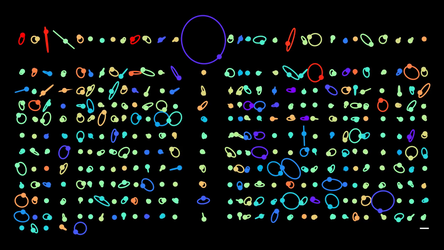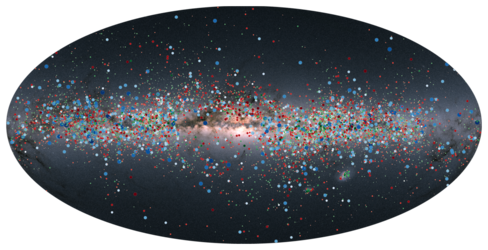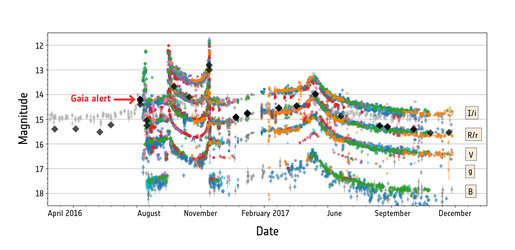Accept all cookies Accept only essential cookies See our Cookie Notice

About ESA
The European Space Agency (ESA) is Europe’s gateway to space. Its mission is to shape the development of Europe’s space capability and ensure that investment in space continues to deliver benefits to the citizens of Europe and the world.
Highlights
ESA - United space in Europe
This is ESA ESA facts Member States & Cooperating States Funding Director General Top management For Member State Delegations European vision European Space Policy ESA & EU Space Councils Responsibility & Sustainability Annual Report Calendar of meetings Corporate newsEstablishments & sites
ESA Headquarters ESA ESTEC ESA ESOC ESA ESRIN ESA EAC ESA ESAC Europe's Spaceport ESA ESEC ESA ECSAT Brussels Office Washington OfficeWorking with ESA
Business with ESA ESA Commercialisation Gateway Law at ESA Careers Cyber resilience at ESA IT at ESA Newsroom Partnerships Merchandising Licence Education Open Space Innovation Platform Integrity and Reporting Administrative Tribunal Health and SafetyMore about ESA
History ESA Historical Archives Exhibitions Publications Art & Culture ESA Merchandise Kids Diversity ESA Brand Centre ESA ChampionsLatest
Space in Member States
Find out more about space activities in our 23 Member States, and understand how ESA works together with their national agencies, institutions and organisations.
Science & Exploration
Exploring our Solar System and unlocking the secrets of the Universe
Go to topicAstronauts
Missions
Juice Euclid Webb Solar Orbiter BepiColombo Gaia ExoMars Cheops Exoplanet missions More missionsActivities
International Space Station Orion service module Gateway Concordia Caves & Pangaea BenefitsLatest
Space Safety
Protecting life and infrastructure on Earth and in orbit
Go to topicAsteroids
Asteroids and Planetary Defence Asteroid danger explained Flyeye telescope: asteroid detection Hera mission: asteroid deflection Near-Earth Object Coordination CentreSpace junk
About space debris Space debris by the numbers Space Environment Report In space refuelling, refurbishing and removingSafety from space
Clean Space ecodesign Zero Debris Technologies Space for Earth Supporting Sustainable DevelopmentLatest
Applications
Using space to benefit citizens and meet future challenges on Earth
Go to topicObserving the Earth
Observing the Earth Future EO Copernicus Meteorology Space for our climate Satellite missionsCommercialisation
ESA Commercialisation Gateway Open Space Innovation Platform Business Incubation ESA Space SolutionsLatest
Enabling & Support
Making space accessible and developing the technologies for the future
Go to topicBuilding missions
Space Engineering and Technology Test centre Laboratories Concurrent Design Facility Preparing for the future Shaping the Future Discovery and Preparation Advanced Concepts TeamSpace transportation
Space Transportation Ariane Vega Space Rider Future space transportation Boost! Europe's Spaceport Launches from Europe's Spaceport from 2012Latest
How Gaia detects binary stars
Thank you for liking
You have already liked this page, you can only like it once!
This animation shows three different techniques that Gaia uses to detect binary stars.
Astrometry: binary stars are detected by a motion on the sky which is not uniform; this can be an elliptic motion or just a part of it for orbits with very long periods. The two sources can't be seen individually as they are too distant; either the two companions have a very different magnitude (an extreme example is a star and a planet) and only the motion of the bright one can be detected; or the sources have a similar magnitude and only the motion of the photocentre is seen. Astrometric binaries generally have long periods (months to years or decades) as the motion on the sky is too small to detect short-period binaries.
Photometry: eclipsing binaries are detected thanks to the periodic dimming of a star due to a (partial) eclipse by a companion. As the probability that the line of sight is precisely along the plane of the orbit is very small if the two sources are widely separated, the observed eclipsing binaries typically have small periods, in the order of hours to days.
Spectroscopy: these binaries have a radial velocity that varies periodically, depending on whether a star approaches or recedes from us. They are detected thanks to this variation. If the sources have a similar magnitude, the spectral lines of the two objects can be seen, though frequently only the lines from the brightest are seen. As the amplitude of the radial velocity variation increases when the period is shorter, short-period binaries are more frequent, typically from hours to months.
Thanks to these techniques, Gaia is able to detect thousands of binary stars. In the best cases, it is possible to estimate the mass of the companions and sometimes their individual magnitudes too. From this, astronomers may discover among normal stars some hidden treasures such as an exoplanet, or, on the heavy side, a white dwarf or compact companions such as neutron stars or even black holes.
Acknowledgements: ESA/Gaia/DPAC/CU4/NSS, G. Sadowski, A. Jorissen, C. Siopis
-
CREDIT
ESA/Gaia/DPAC -
LICENCE
CC BY-SA 3.0 IGO or ESA Standard Licence
(content can be used under either licence)
-
Closed captions available Captions and subtitles are available (automatically generated by YouTube) - select your language using the YouTube player controls. A non-YouTube version is available using the 'download' button above.
-
Animation
-
-
-
-
-

Social stars

Gaia characterises dynamics of 10 000 variable stars

Microlensing observation campaign spearheaded by Gaia

Discovery of supernova Gaia14aaa















 Germany
Germany
 Austria
Austria
 Belgium
Belgium
 Denmark
Denmark
 Spain
Spain
 Estonia
Estonia
 Finland
Finland
 France
France
 Greece
Greece
 Hungary
Hungary
 Ireland
Ireland
 Italy
Italy
 Luxembourg
Luxembourg
 Norway
Norway
 The Netherlands
The Netherlands
 Poland
Poland
 Portugal
Portugal
 Czechia
Czechia
 Romania
Romania
 United Kingdom
United Kingdom
 Slovenia
Slovenia
 Sweden
Sweden
 Switzerland
Switzerland

























